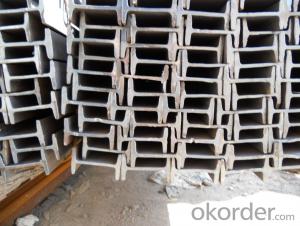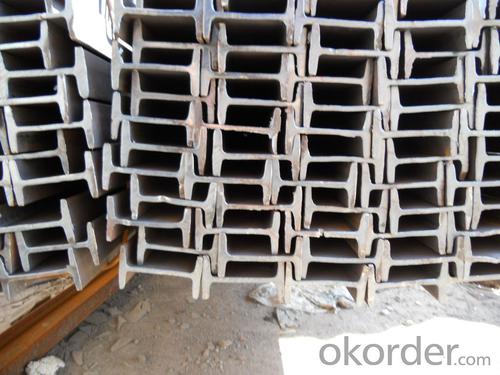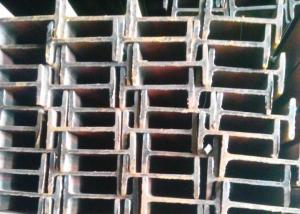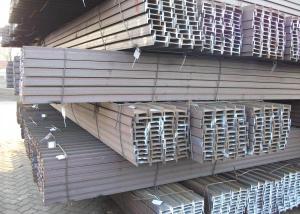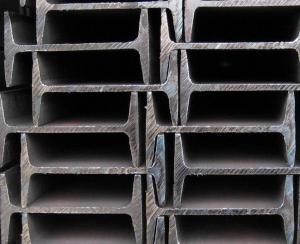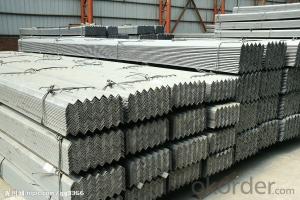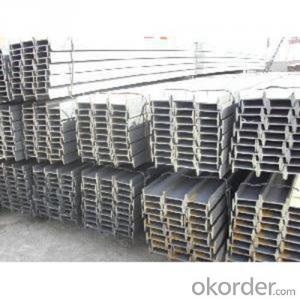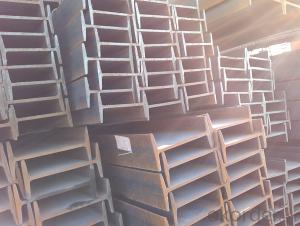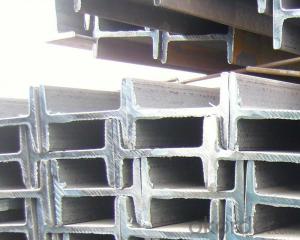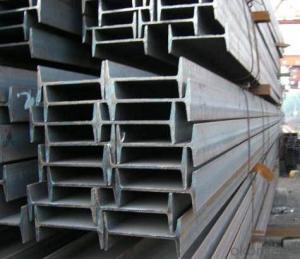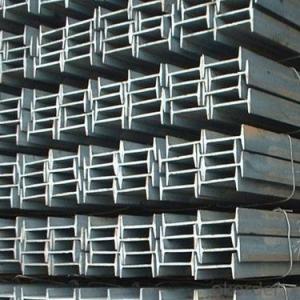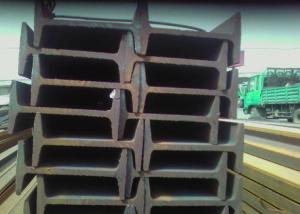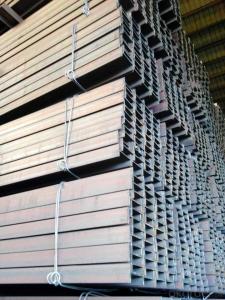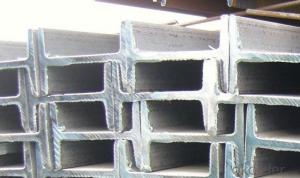European Standard IPE100/IPE120 with High Quality
- Loading Port:
- Tianjin
- Payment Terms:
- TT or LC
- Min Order Qty:
- 25 m.t
- Supply Capability:
- 15000 m.t/month
OKorder Service Pledge
OKorder Financial Service
You Might Also Like
Product Description of European Standard IPE100/IPE120 with High Quality:
Specifications of European Standard IPE100/IPE120 with High Quality:
1.Standard: EN10025
2.Material: S235JR or Equivalent
3.Length: 6m, 12m
4. Size:
| Size(mm) | Mass(Kg/m) |
| 100*55*4.1 | 8.10 |
| 120*64*4.8 | 10.40 |
Usage & Applications of European Standard IPE100/IPE120 with High Quality:
Commercial building structure;
Pre-engineered buildings;
Machinery support structures;
Prefabricated structure;
Medium scale bridges.
Packaging & Delivery of European Standard IPE100/IPE120 with High Quality:
1. Transportation: the goods are delivered by truck from mill to loading port, the maximum quantity can be loaded is around 40MTs by each truck. If the order quantity cannot reach the full truck loaded, the transportation cost per ton will be little higher than full load.
2. With bundles and load in 20 feet/40 feet container, or by bulk cargo, also we could do as customer's request.
3. Marks:
Color mark: There will be color marking on both end of the bundle for the cargo delivered by bulk vessel. That makes it easily to distinguish at the destination port.
Tag mark: There will be tag mark tied up on the bundles. The information usually including supplier logo and name, product name, made in China, shipping marks and other information request by the customer.
If loading by container the marking is not needed, but we will prepare it as customer's request.
FAQ:
Q1: Why buy Materials & Equipment from OKorder.com?
A1: All products offered byOKorder.com are carefully selected from China's most reliable manufacturing enterprises. Through its ISO certifications, OKorder.com adheres to the highest standards and a commitment to supply chain safety and customer satisfaction.
Q2: How do we guarantee the quality of our products?
A2: We have established an advanced quality management system which conducts strict quality tests at every step, from raw materials to the final product. At the same time, we provide extensive follow-up service assurances as required.
Q3: How soon can we receive the product after purchase?
A3: When we receive the advance payment or original LC, we will arrange production. The shipping date is dependent upon the quatity, how many sizes you want and the plan of production, but is typically 1 month to 2 month days from the beginning of production.
Images of European Standard IPE100/IPE120 with High Quality:
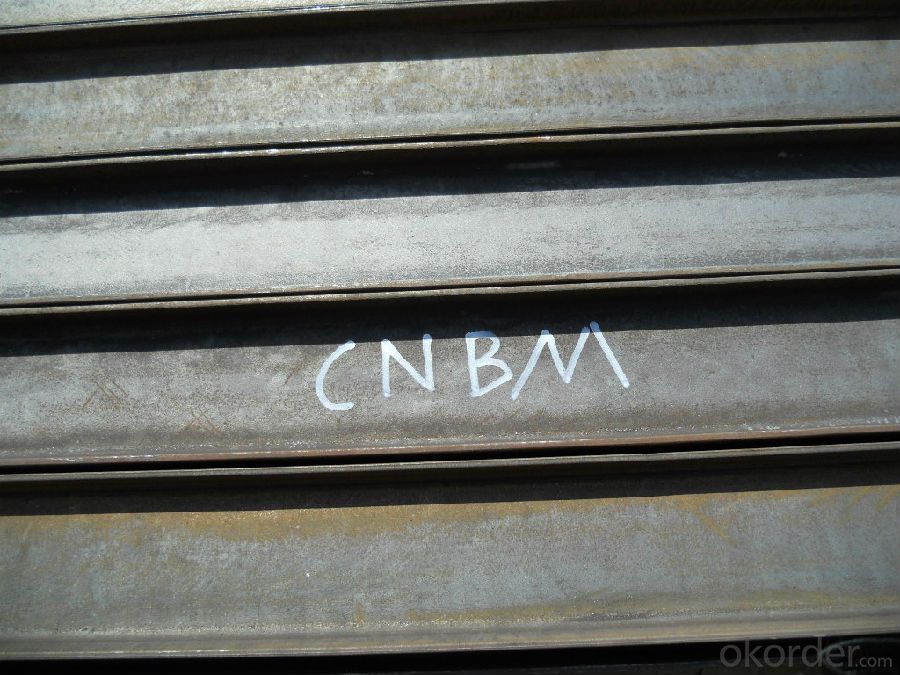
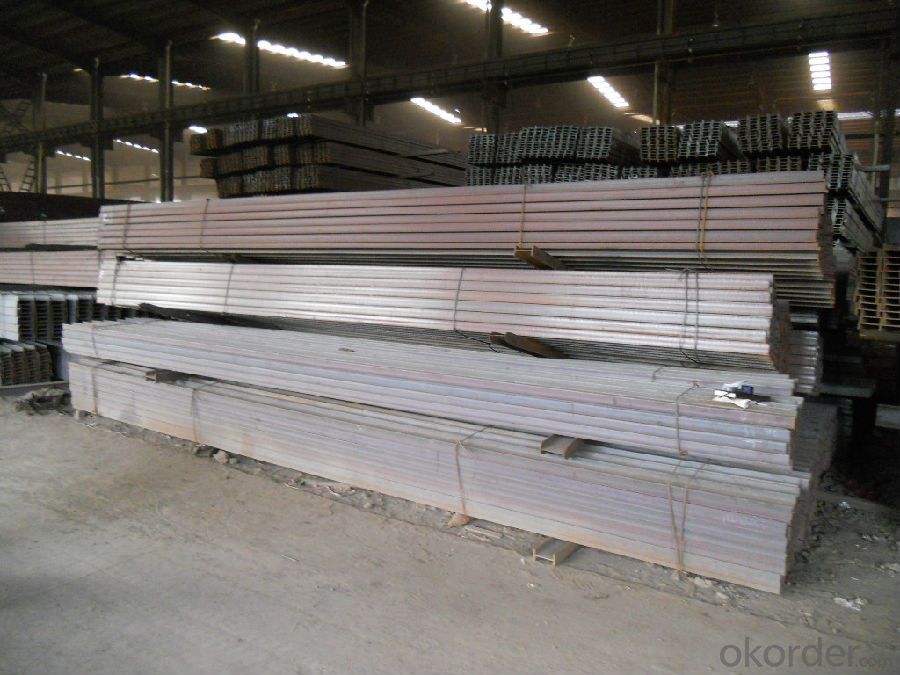
*If you would like to get our price, please inform us the size, standard/material and quantity. Thank you very much for your attention.
- Q: How do steel I-beams perform in terms of long-term deflection?
- Steel I-beams perform very well in terms of long-term deflection. Due to their high tensile strength and stiffness, they are less prone to sagging or bending over time compared to other materials. This makes them reliable and a popular choice for structural applications where minimal deflection is desired.
- Q: Can Steel I-Beams be used for rooftop gardens?
- Rooftop gardens can certainly utilize steel I-beams. In fact, they are commonly employed as a structural support system for rooftop gardens in urban areas with limited space. Steel I-beams possess excellent strength and durability, enabling them to bear the weight of the garden, planters, soil, and any additional infrastructure like walkways or seating areas. Moreover, steel I-beams can easily be incorporated into the overall design of a rooftop garden, allowing for flexibility in constructing different levels or terraces. They also offer stability and resistance to weather conditions, ensuring the garden remains secure even during strong winds or heavy rain. However, it is crucial to note that the engineer or qualified professional should assess the specific design and load-bearing capacity of the steel I-beams to ensure they can safely support the intended rooftop garden. Local building codes and regulations should also be considered to ensure compliance and safety. In conclusion, steel I-beams provide a viable option for rooftop gardens, offering a sturdy and stable foundation for creating aesthetically pleasing and functional green spaces in urban environments.
- Q: What is called I-beam suspension outer shelf, what to do?.
- Two pull rings are embedded on the floor slab, and the I-beam is put in it and cantilevered outside the floor, and then the vertical rod of the outer frame is fixed on the i-beam. This is a high-rise building commonly used as an external frame erection.
- Q: How do steel I-beams perform in high-humidity environments?
- Due to their inherent resistance to moisture, steel I-beams perform well in high-humidity environments. Typically, the steel used in I-beams is coated with protective finishes like galvanization or paint. These finishes act as barriers to prevent moisture penetration and direct contact with water or humidity, thus preventing corrosion. Moreover, steel is a non-porous material, unlike wood or other organic materials. This non-porous characteristic makes steel I-beams less prone to swelling, warping, or rotting that can occur in high-humidity conditions. However, in extremely corrosive environments such as coastal areas with high salt content in the air, additional precautions may be necessary. In such cases, stainless steel or other corrosion-resistant alloys are commonly utilized to ensure the durability and performance of the I-beams. All in all, steel I-beams are a reliable choice for high-humidity environments. They offer strength, durability, and resistance to moisture-related issues.
- Q: What are the disadvantages of using Steel I-Beams?
- There are a few disadvantages associated with using steel I-beams in construction projects. Firstly, steel I-beams are relatively heavy, which can make the transportation and handling of these beams more difficult compared to other materials. This can lead to increased labor costs and logistical challenges during construction. Another disadvantage is the potential for corrosion. Steel is prone to rusting when exposed to moisture or harsh weather conditions. If not properly protected, the I-beams can weaken over time, compromising the structural integrity of the building. Regular maintenance and protective coatings are necessary to mitigate this risk, adding to the overall cost. Additionally, steel I-beams have a high thermal conductivity, meaning they can conduct heat more easily compared to other materials. This can result in increased heat transfer, leading to higher energy consumption and heating or cooling costs for the building. Lastly, steel I-beams may have limitations in terms of design flexibility. While they are commonly used in many applications, the shape and size of I-beams may not be suitable for every architectural design. This can restrict the creativity of architects and limit the aesthetic appeal of the structure. Overall, while steel I-beams offer many advantages such as strength and durability, it is important to consider these disadvantages when deciding on the appropriate material for a construction project.
- Q: Can steel I-beams be used for multi-story buildings?
- Yes, steel I-beams can be used for multi-story buildings. They are commonly used in the construction industry for their strength, durability, and ability to support heavy loads over long spans. I-beams offer structural stability and are often employed in the framework of multi-story buildings to provide a solid and reliable support system.
- Q: What does "I-beam 125A" mean?
- The specifications are expressed in terms of waist height (H) * leg width (b) * waist thickness (d), such as "work 160*88*6", which means that the waist height is 160 mm, the width of the leg is 88 mm, and the waist thickness is 6 mm. The specifications of I-beam can also be expressed by type. The number of centimeters is indicated by the model, such as "work 16", which means waist height is 16cm.
- Q: Demolition of rural cottage bearing wall, take reinforced beam OK?
- In the seismic fortification of 6 degrees or more areas should not be removed, otherwise it will increase the spacing between the walls, to weaken the integrity of the building, adverse earthquake, once the earthquake occurred, will reduce the escape time.
- Q: Are steel I-beams flexible or rigid?
- Steel I-beams are rigid. They are designed to provide maximum structural support and minimize deflection under heavy loads. The shape of an I-beam, with its flanges and web, allows it to distribute weight evenly along its length, making it highly resistant to bending or flexing. This rigidity is crucial in construction and engineering applications where stability and strength are paramount.
- Q: Can steel I-beams be used for roof trusses?
- Yes, steel I-beams can be used for roof trusses. They are commonly used in commercial and industrial buildings where their strength and load-bearing capacity are advantageous. However, it is important to ensure proper engineering and design considerations are taken into account to meet the specific structural requirements and local building codes.
Send your message to us
European Standard IPE100/IPE120 with High Quality
- Loading Port:
- Tianjin
- Payment Terms:
- TT or LC
- Min Order Qty:
- 25 m.t
- Supply Capability:
- 15000 m.t/month
OKorder Service Pledge
OKorder Financial Service
Similar products
Hot products
Hot Searches
Related keywords
